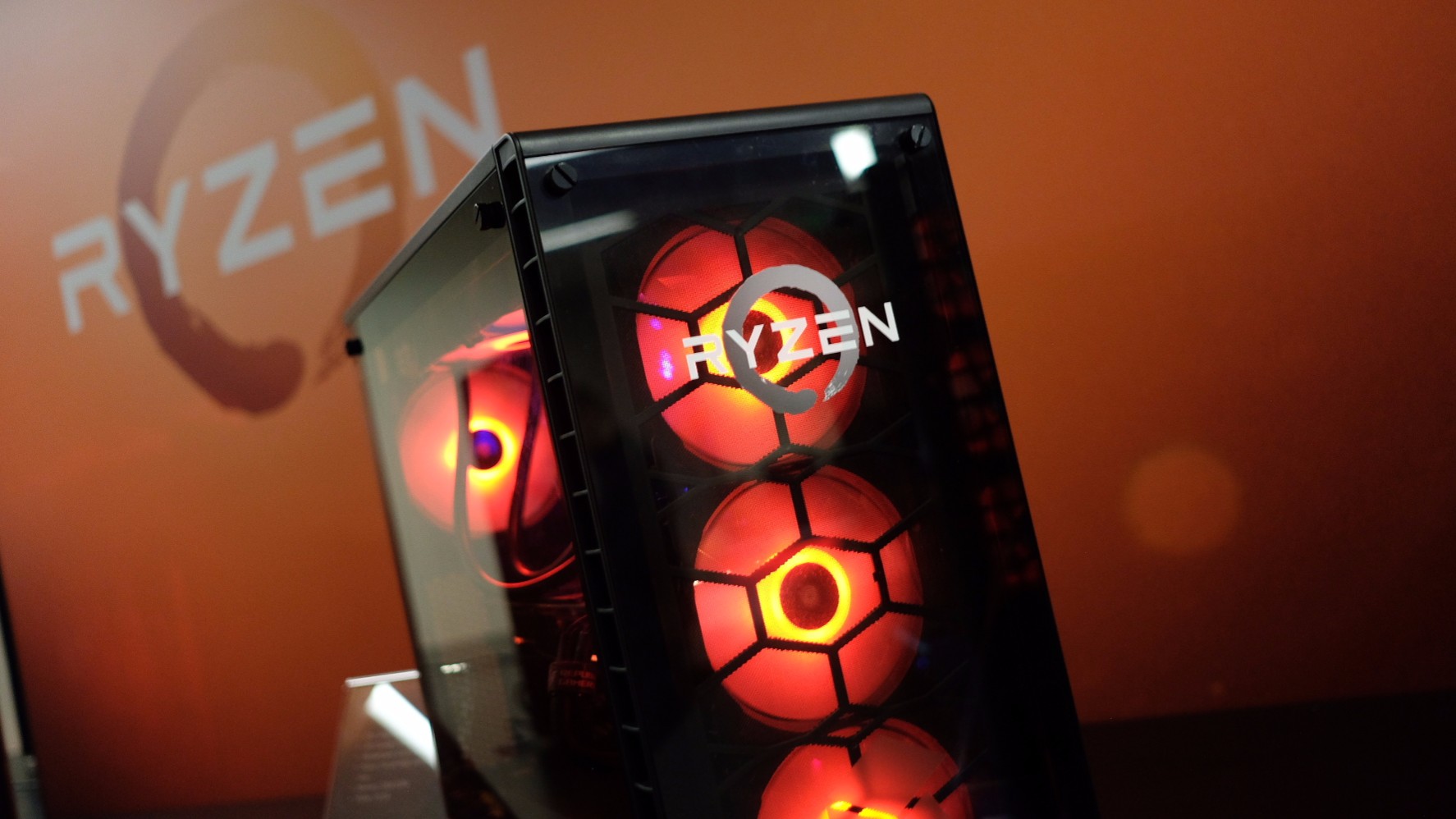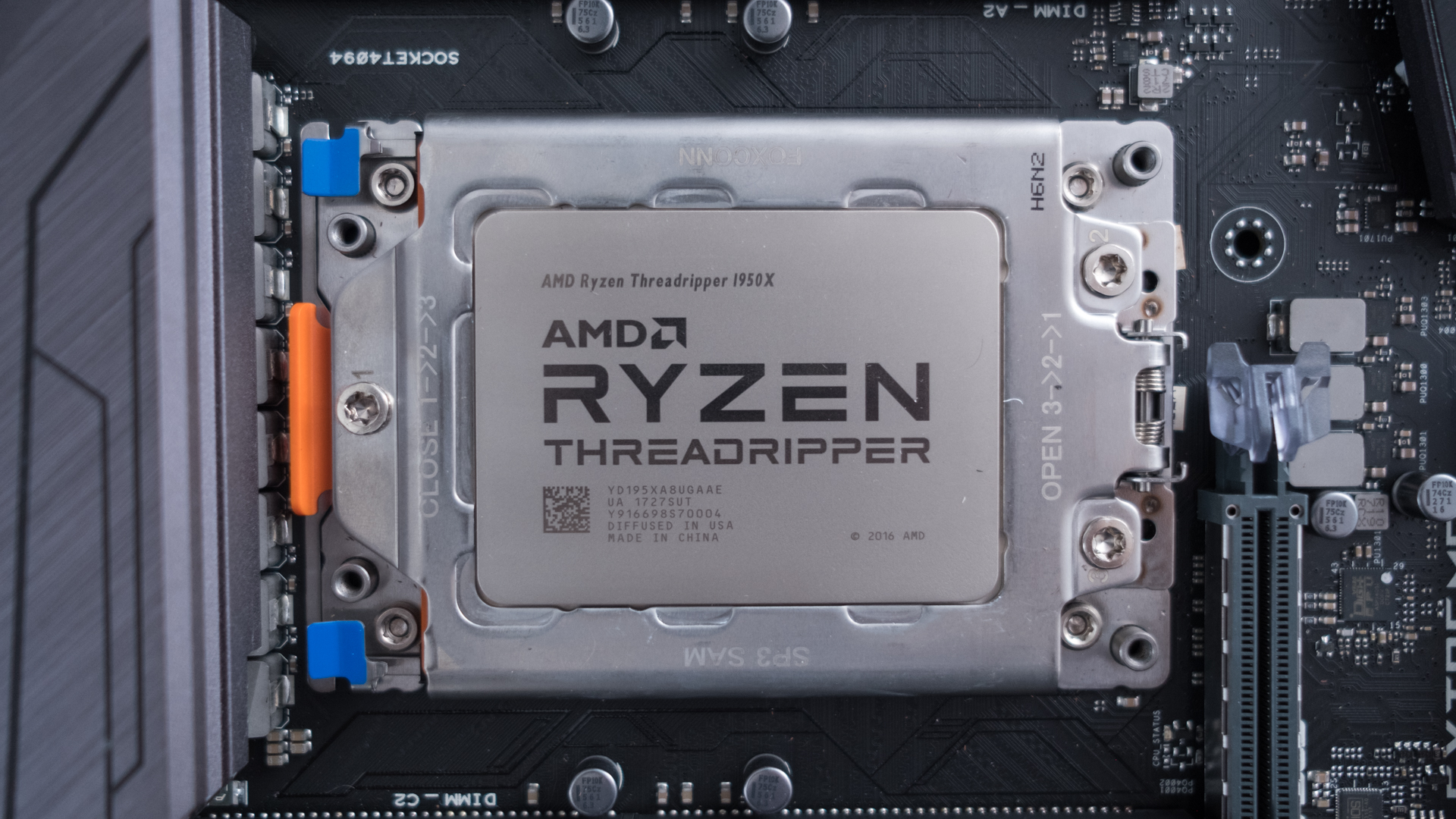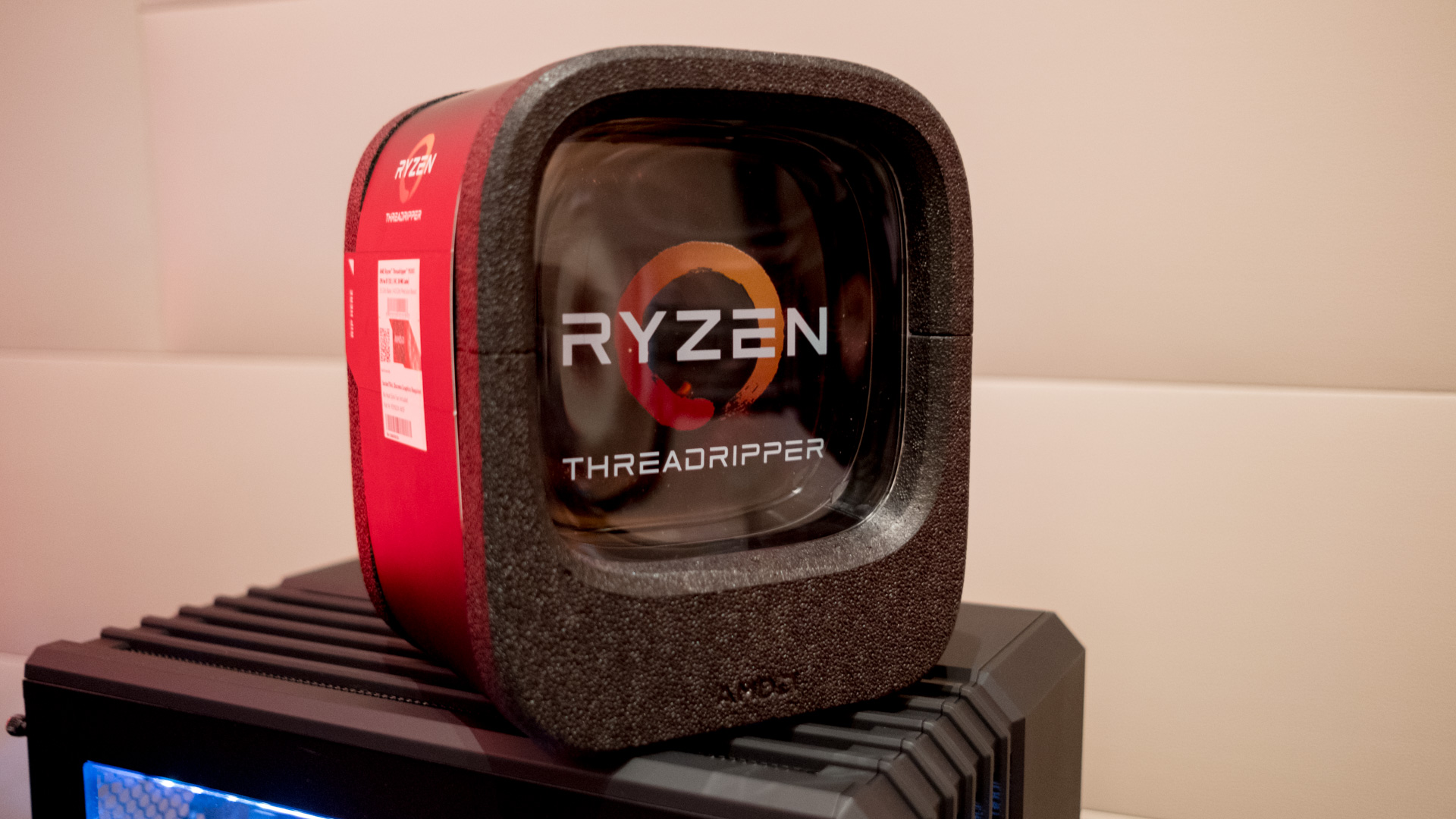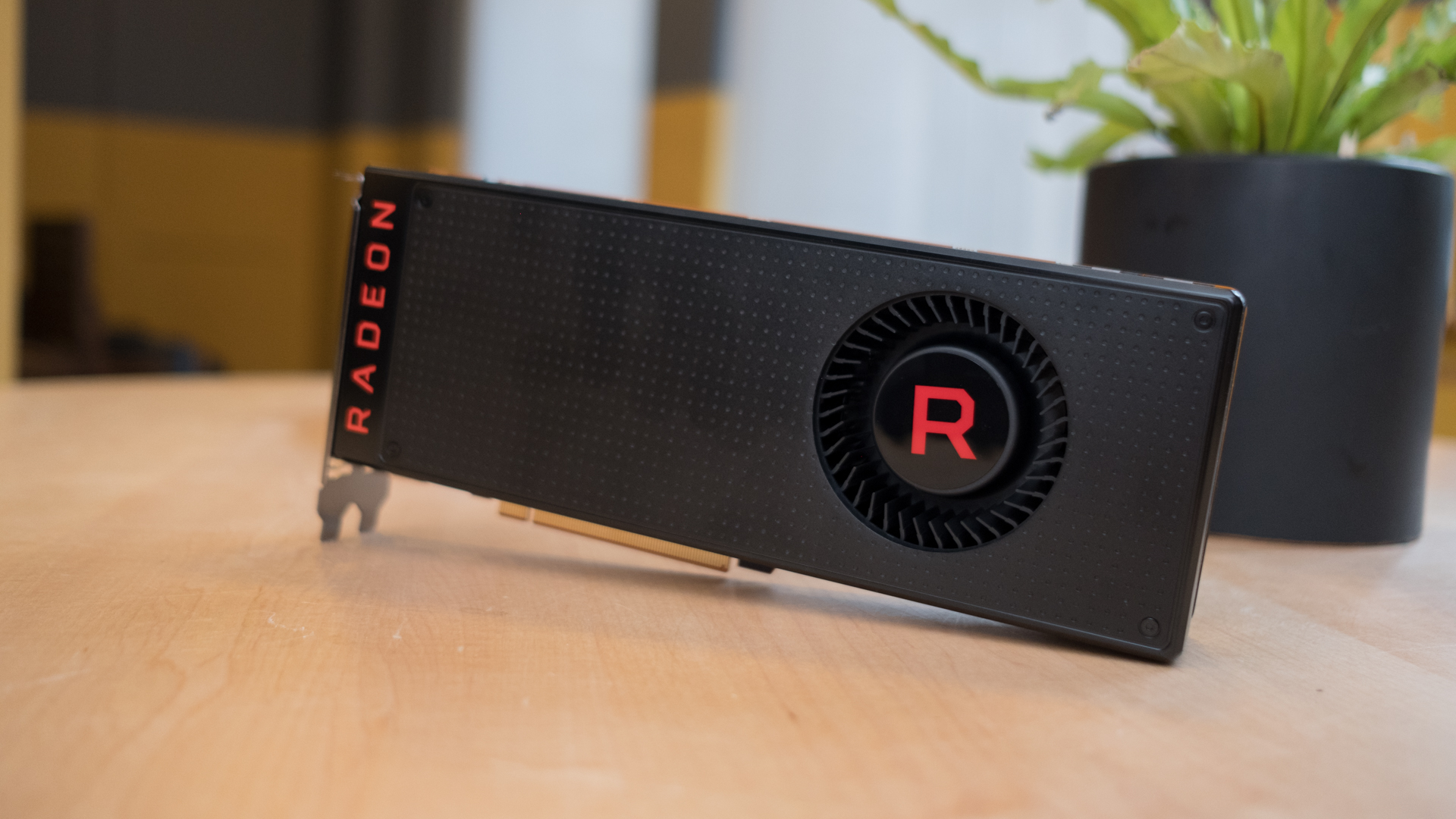In this article, we’re evaluating how AMD performed over the course of 2017, and it's certainly been a mixed bag.
AMD has had a year of two distinct things: processors and graphics cards. The former was a definite success story, and the latter, well, not so much…

Processing power
As you can’t have missed, 2017 witnessed the launch of AMD’s new Ryzen processors, and these chips have made a big impact, clawing back CPU territory from the dominant Intel.
Ryzen processors first hit the shelves back in March, immediately attracting a great deal of praise from the press and punters alike. In our review of the flagship Ryzen 7 1800X – an eight-core processor capable of boosting up to 4GHz – we observed that AMD had “nailed it” and that it was the “most disruptive move since the Athlon 64 days”, concluding that Ryzen was set to “shake the consumer stage”, particularly on the pricing front.
Budget models followed (like the Ryzen 3 1300X) in the summer, which we crowned king of the ‘value processors’, and throughout the year, Ryzen chips did indeed shake up the CPU arena considerably.
In AMD’s figures for Q3, released in October, Ryzen processors were shown to be selling strongly, and the driving force behind a near-doubling of sales for the computing and graphics group compared to the previous year.
Indeed, CEO Lisa Su made a bold claim when talking-up these financial results, stating that Ryzen desktop processors actually accounted for between 40 to 50% of sales at some (unspecified) online retailers (note that this was backed up by previously revealed figures from one German retailer). Meaning that the company is close to coming level with Intel in some outlets, and although obviously this isn’t a reflection of the overall processor market, it’s still a telling swing towards AMD.
All that said, we have to remember that Ryzen wasn’t without controversy when it first emerged. There were a number of serious teething issues, including alleged problems with Windows 10’s thread scheduler, incorrect reporting of CPU temperatures, and most seriously, disappointing performance running games at 1080p resolution.
The latter was mainly down to games not being properly optimized for AMD’s new chips, a situation which has been gradually remedied as developers get to grips with Ryzen more fully (although AMD’s BIOS updates tweaking various timings and the like have helped, too).

Heavyweight Ryzen Threadripper processors also helped to bolster AMD’s strength on the CPU front when they arrived in the summer, headed up by a mighty 16-core chip. The Threadripper 1950X might not have impressed us quite as much as vanilla Ryzen chips, but the CPU fought its corner well against the Core i9-7900X (Intel’s 10-core processor which carries the same price tag). And indeed it tied with Intel’s much pricier Core i9-7960X in our battle of the 16-core monster processors.
Of course, these sort of thousand dollar plus processors are a much more niche proposition than mainstream CPUs – Ryzen or Core alike – purely because of their pricing.

Intel fires the glue gun
Another way of gauging Ryzen’s success is to look at Intel’s reaction. Intel is suddenly putting a big emphasis on getting multi-core processors out there, with its first mainstream six-core CPU emerging in October, and apparent plans for an eight-core mainstream offering with its next-gen Core i7 flagship processor next year.
During 2017, Intel has also fired rather desperate-looking volleys of flak at AMD – with accusations of ‘glued-together processors’, no less – which makes the chip giant look worried.
Ryzen mobile processors for laptops are also looking strong, having debuted at the tail end of this year.
On balance, AMD will doubtless be very happy with how 2017 panned out for processors, particularly given that Ryzen’s early gremlins have now been pretty much ironed out.

Graphic detail
However, when it comes to the other big pillar of AMD’s consumer business – graphics cards – the company won’t be so pleased. AMD’s trump card for 2017 was GPUs based on new Vega technology, but these simply haven’t made anything close to the same impact as Ryzen.
The initial two AMD Radeon RX Vega graphics cards emerged in August, and we were very impressed with the flagship RX Vega 64, calling it an excellent first showing of Vega tech – giving largely equivalent performance to Nvidia’s GTX 1080 at a theoretically slightly cheaper price – with plenty of potential for the future.
But these GPUs fizzled out in 2017 for a couple of reasons. Firstly, there was confusion around initial pricing and supposedly introductory discount rates. Then the cards were afflicted by stock shortages which pushed prices up, all of which meant a very rocky start for Vega. And that continued throughout the year up until the time of writing, when Vega stock is still extremely thin on the ground, with the cards costing far more than the initial recommended price AMD announced ($499 or £450).
A report which emerged at the end of November on discrete graphics card sales showed that Vega had failed to increase AMD’s market share – indeed the firm’s share of the GPU arena fell 2.6%, down to 27.2%. That’s a damning reflection of Vega’s initial impact, or lack of it, and it appears that AMD has rather shot itself in the foot here, simply by failing to get production lines running up to speed, and not pushing anything like enough stock of these new cards onto shelves (and thereby applying upward price pressure).

Looking to next year
In overall terms, on the strength of Ryzen, this year has to be regarded as a successful one for AMD – although as we’ve seen, the second half of the equation, Vega, was a far shakier proposition.
However, as we observed in our review of the flagship Vega graphics card, there’s still a good deal of potential with this GPU technology, and hopefully developers will make use of this in future games. But the real big hope is that stock issues will finally be remedied and prices will therefore settle, and if – or should we say when – that happens, Vega should start to do better in 2018. Of course, the truth is it couldn’t do much worse than the hamstrung efforts of 2017.
Also note that there is a slight black cloud on the GPU horizon, as AMD observed in its latest financial results, which forecast a decline of around 15% in the next quarter when it comes to its computing and graphics group revenue – with one of the main reasons cited being sales for cryptocurrency mining GPUs, which are expected to cool off. On the plus side, maybe that will help make more stock available for gamers.
As to the outlook for processors, Ryzen 2 is rumored to arrive in February, so very early on in 2018, bringing with it an alleged boost in clock speeds of around 200-300MHz across-the-board, and better power-efficiency plus overclocking potential. With that being a further push for AMD CPUs, it could be easy to get carried away with the prospect of taking back even more turf from Intel.
But we must also bear in mind that Intel isn’t standing still. As we’ve already mentioned, AMD’s rival has already unleashed a superb mainstream hexa-core processor in the form of the Core i7-8700K, with an eight-core Core i7 heavyweight successor potentially arriving in 2017. That could leave AMD with a hell of a fight on its hands to maintain Ryzen’s forward momentum.
Of course, a lot will depend on relative pricing, so the good news about this CPU war is that with any luck we’ll see pot-shots being taken by both sides, and chunks being blown off prices – and the consumer will be the ultimate winner. That’s a bit of a tired old line, but we get the feeling some real CPU competition could be stoked up next year, and we couldn’t wish for better news than that for 2018.
source http://www.techradar.com/news/amd-in-2017-ryzen-hits-a-blackjack-while-vega-goes-bust
No comments:
Post a Comment